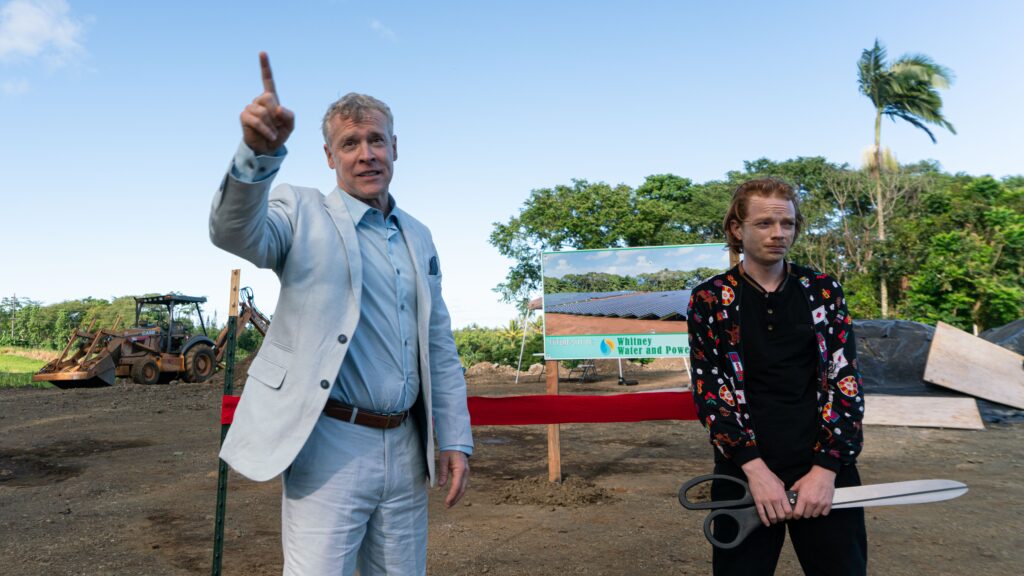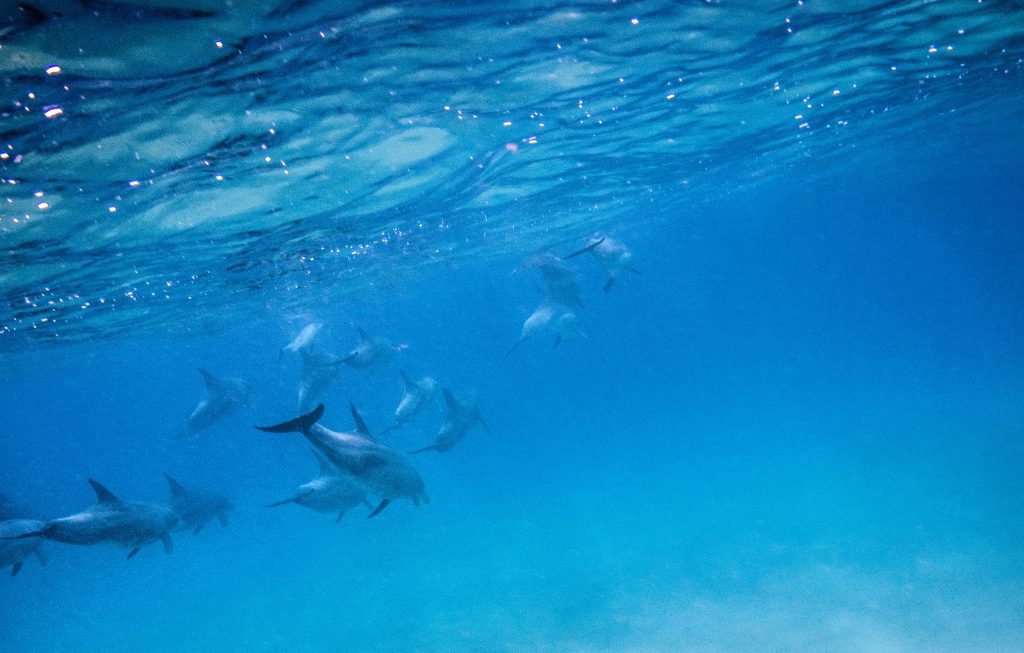March 21, 2024
by Carla Hay

Directed by Max Isaacson
Culture Representation: Taking place in the fictional city of Paradise, Hawaii, the action film “Paradise” features a racially diverse cast of characters (white, African American and Asian) representing the working-class, middle-class and wealthy.
Culture Clash: A rebellious misfit goes on a killing spree against the people whom she blames for the murder of her police sheriff father.
Culture Audience: “Paradise” will appeal primarily to people who are fans of the movie’s headliners and action movies that don’t do anything innovative or exciting.

“Paradise” is trying to be a “Kill Bill” type of action movie, with a female protagonist out for deadly revenge, but the screenplay is so messy and moronic, it just ends up being another forgettable, substandard flick with bloody violence. Patricia Allison has charisma in the starring role, but “Paradise” is a failure of imagination and just drowns in stupid dialogue and a cesspool of clichés.
Directed by Max Isaacson and written by Tony Borden, “Paradise” is their feature-film debut. The movie (which takes place and was filmed in Hawaii) has some eye-catching and somewhat stylish-looking cinematography. However, the movie’s story is so amatuerish, you have to wonder why the fairly well-known actors in the cast agreed to do this movie. Maybe the appeal of filming in Hawaii was too tempting to pass up.
“Paradise” is named for the fictional city in Hawaii where the story takes place. (“Paradise” was actually filmed in Hilo, Hawaii, which is about 13 miles northwest of Hawaiian Paradise Park.) The movie’s central character is Ella Patchet (played by Allison), who is supposed to be about 18 or 19 years old. Ella has a reputation for being a rebellious misfit.
Ella works in a gun shop and is the type of person who gets thrown out of places for getting into physical fights. That’s what happens in the movie’s opening scene that shows Ella racing off on her bicycle after getting into an altercation at a seedy-looking place. The altercation is not shown on camera, but there will be plenty of other scenes in the movie that show how Ella fights.
Why does Ella has a very angry streak to her personality? It has a lot to do with the fact that her mother and brother were shot to death by unnamed drug dealers, who were not brought to justice. To make matters worse, Ella’s father Dan Patchett (played by Bashir Salahuddin) is the sheriff of Paradise, so Ella puts a lot of blame on him for not being able to catch the killers. The movie never explains if Ella was always this violent and angry, or if the bitterness of her family members’ murders caused her to be this violent and angry.
Ella has a sidekick friend named Townes (played by Myles Evans), who apparently has nothing better to do in his life than hang out with Ella and participate in whatever troublemaking she gets involved with or instigates. Ella and Townes both dislike Giles Whitney (played by CJ Hoff), the spoiled and obnoxious teenage son of Paradise’s smarmy mayor Calvin Whitney (played by Tate Donovan), who is the type of phony-acting politician who pretends to be an upstanding citizen in public but is obviously unethical behind the scenes.
Mayor Whitney, who is the wealthy owner of the Whitney Water and Power company, is in the midst of negotiating a lucrative deal to bring a solar farm to Paradise. It doesn’t take a genius to figure out who will personally profit the most from this deal. Much of “Paradise” tries to come across as being a mystery thriller, but everything about this poorly conceived movie treats viewers like idiots. “Paradise” has so many glaringly obvious clues, there is no real mystery to solve.
At a party with other young people, Giles taunts Ella over her father not being able to solve the murders of Ella’s brother and Ella’s mother. Ella’s response is to shoot a gun at Giles. Luckily for Giles, the bullets miss Giles, and there are no injuries to anyone else. Later, Ella goes over to the mayor’s house and demands that more should be done to investigate the murders of her brother and mother. Calvin promises Ella that he will get justice for her murdered family members.
An early scene in the movie shows Calvin visiting the local police station to meet with Dan. Calvin shows Dan a newspaper article reporting that a crime boss named Lee Paige (played by Tia Carrere) and her group of thugs have returned to the area. Calvin asks Dan, “Did you really think that they wouldn’t come back?” Dan replies, “After 10 years? Yeah.”
One of Dan’s subordinates is a police officer named Troy Hobbes (played by Arjun Gupta), who is very eager to please the mayor. “Paradise” makes it too easy to see early on in the movie where loyalties might lie and who is most likely be corrupt. The mayor also has a henchmen/fixer named Sam Mayo (played by Adam Lustick), who is a typically generic lackey enforcer.
It should come as no surprise that Ella doesn’t want to wait for the mayor to get justice. The stakes get even higher for her when her father Dan ends up being murdered. The rest of “Paradise” then just becomes one shooting spree/murder scene after another, often clumsily staged. The people responsible for the murder of Dan are exactly who you think they are. The people who die in the movie are exactly those you expect to die.
The dialogue is bad enough in “Paradise,” but a lot of the acting isn’t much better. Gupta is very over-the-top (and not in a good way) in many of his scenes, while Donovan gives a very lackluster “I’m just here for the salary” type of performance. Carrere (who really has a cameo role, not a starring role) acts like she’s in a campy comedy, not a gritty action flick. Allison as the Ella Patchet character could have been iconic with a clever screenplay and skillful direction. As it stands, “Paradise” can only describe some of the Hawaiian locations in the movie, not the soulless junk that is the actual movie.
Tubi premiered “Paradise” on March 21, 2024.






